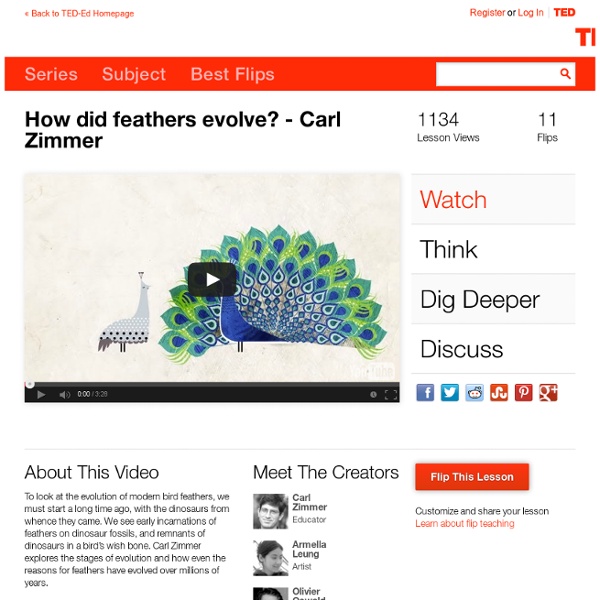



Five fingers of evolution - Paul Andersen In his talk, Paul Andersen explains the five causes of microevolution. Research one example for each cause in the human population. Use the following population simulator to simulate microevolution: Run the simulation using the default settings. Note the change in gene frequencies due to chance.
The driving force for molecular evolution of translation Believe in Ohio STEM videos The Believe in Ohio program invites high school and college students, their instructors and the community to take a virtual field trip into the innovation economy of the future that is being built in Ohio through a series of six, free, regionalized, online courses. What this course is about and why is it important? Our nation is being challenged on an unprecedented level to maintain its historic prosperity. In the face of this challenge, over the last decade, the State of Ohio and its regions have been building Ohio’s innovation economy of the future. Today, the State of Ohio offers great promise for students who want to build a prosperous future for themselves by developing an entrepreneurial mindset, working hard, and applying what they are learning to develop the new products and services and jobs of the future.
Extraordinary Adaptation Peppered Moth Simulation Name:______________________________________________ Objective: Simulate changes in moth population due to pollution and predation, and observe how species can change over time. Introduction: Charles Darwin accumulated a tremendous collection of facts to support the theory of evolution by natural selection. One of his difficulties in demonstrating the theory, however, was the lack of an example of evolution over a short period of time, which could be observed as it was taking place in nature. Although Darwin was unaware of it, remarkable examples of evolution, which might have helped to persuade people of his theory, were in the countryside of his native England. The economic changes known as the industrial revolution began in the middle of the eighteenth century. Instructions: Click the link below to read more information on Kettlewell's study of moths. After 5 minutes record the % of dark moths and light moths - you will need this information later. Data and Analysis 1. 2. 3. 4. 5. 6. 7.